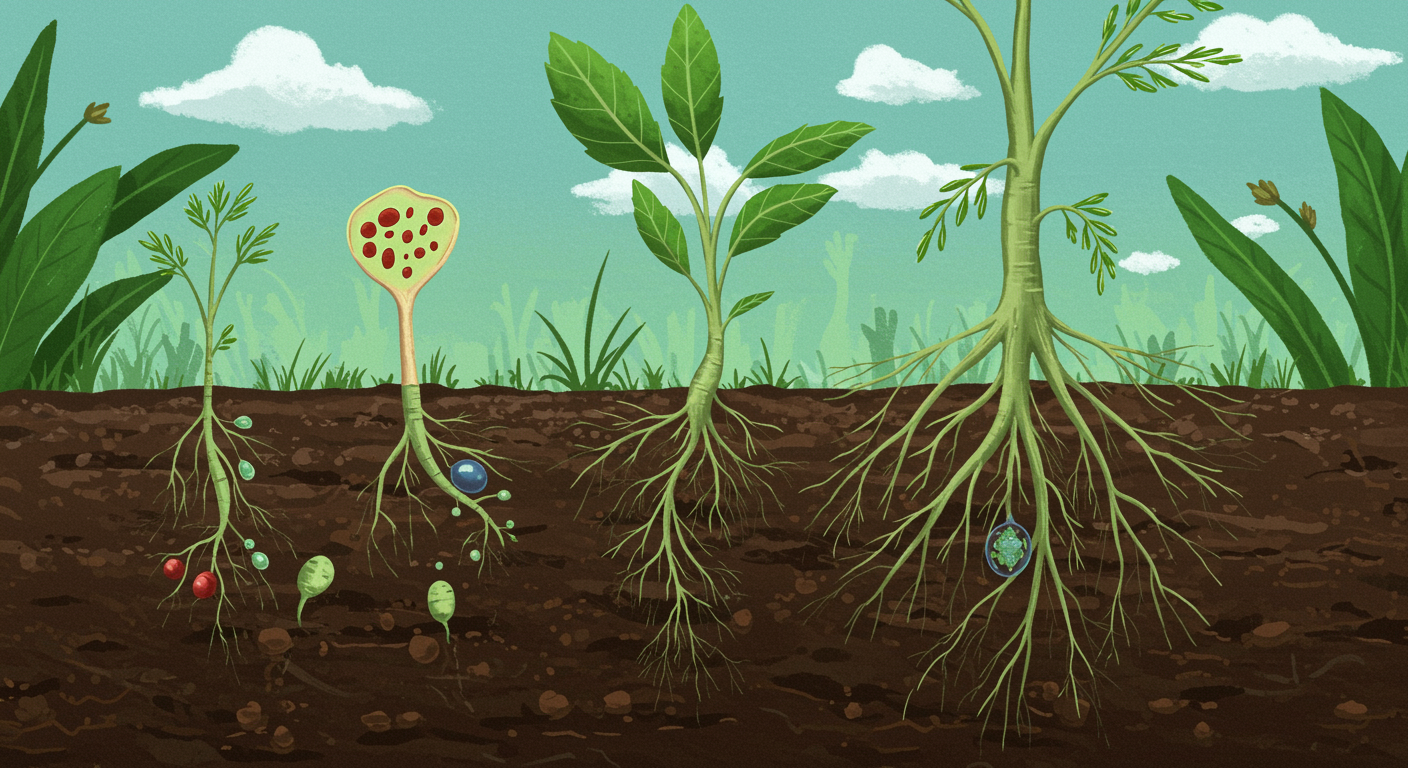
Consider for a moment the silent, hidden world beneath our feet. A vast network of roots constantly extends, probes, and searches, driven by a singular, fundamental need: water. Plants cannot simply pick up and move to a wetter spot, nor can they visually scan the horizon for a distant puddle. Their existence relies on an intricate, often unseen, ability to locate this life-sustaining resource. While we know plants respond to chemical signals and gravity, how precisely do they find water that is not yet within their immediate chemical reach? Recent insights suggest a surprisingly sophisticated mechanism involving vibrations, allowing plants to, in a sense, “hear” water moving through the soil.
For a stationary organism, the challenge of resource acquisition is paramount. A plant’s roots are its lifeline, tasked with anchoring it and absorbing nutrients and water from the soil. But soil isn’t uniformly moist; water distribution can be patchy, influenced by rainfall, evaporation, and the presence of other organisms. Growing roots randomly is energy-intensive and inefficient. Thus, an ability to predict or detect water from a distance would offer a significant evolutionary advantage, directing root growth toward richer areas and conserving vital energy.
This is where the concept of mechanosensing comes into play. Just as we can feel the rumble of a distant truck through the ground, roots may be attuned to subtle mechanical signals. Water, as it moves through soil pores, whether by capillary action, gravitational flow, or even due to temperature differences, generates minuscule vibrations. These vibrations, though imperceptible to humans, propagate through the soil matrix. Picture a tiny drum: the soil particles themselves act as the membrane, transmitting these minute pulses. The hypothesis is that plant roots, particularly their sensitive tips, are equipped to detect these specific frequencies and amplitudes.
While the idea sounds like something from science fiction, scientific inquiry has begun to uncover compelling evidence. Researchers have conducted experiments with specialized setups, observing root growth patterns in response to controlled vibrational stimuli. In one line of study, researchers exposed plant roots to specific low-frequency vibrations that mimic those created by water flow in soil. They noticed that roots would alter their growth direction, preferentially growing towards the source of these vibrations, even in the absence of direct water contact or chemical cues. This suggests an innate ability to process physical cues from their environment.
The exact cellular machinery responsible for this vibrational detection remains an active area of research. However, it is thought that specialized mechanoreceptors, perhaps stretch-sensitive ion channels located in the root cell membranes, could be key. When the cell wall experiences pressure or distortion from vibrations, these channels might open, triggering electrical signals that communicate information about the environment to the rest of the root. This is somewhat analogous to how certain wildlife like spiders use vibrations in their webs or on the ground to locate prey or mates, demonstrating a common principle across diverse forms of nature.
The implications of this discovery extend beyond merely understanding how plants drink. This sophisticated root communication shapes entire ecosystems. A plant that can efficiently locate water will thrive, grow larger, and produce more seeds. This, in turn, influences the distribution of plant species, their competition for resources, and the overall productivity of an environment. Drier regions, for instance, might see plants with highly developed vibrational sensing capabilities, allowing them to exploit scarce water sources more effectively. This hidden sensory world of plants adds another layer to the complex interactions within any given natural habitat.
Furthermore, this vibrational sensing capability doesn’t operate in isolation. It likely integrates with other known plant sensory systems, such as hydrotropism (growing towards a water concentration gradient) and chemical signaling between roots and soil microbes. Think of it as part of a multi-sensory information network, allowing the plant to build a comprehensive picture of its subterranean surroundings. It’s not just one signal, but a chorus of environmental cues that guides a root’s journey through the earth.
Understanding this subtle language of plant roots opens new avenues for agricultural innovation, potentially informing strategies for more resilient crops in changing climates. It also deepens our appreciation for the intricate intelligence embedded within the natural world. The quiet search for water beneath our feet is anything but simple; it is a testament to the profound and often overlooked ingenuity of plant nature.